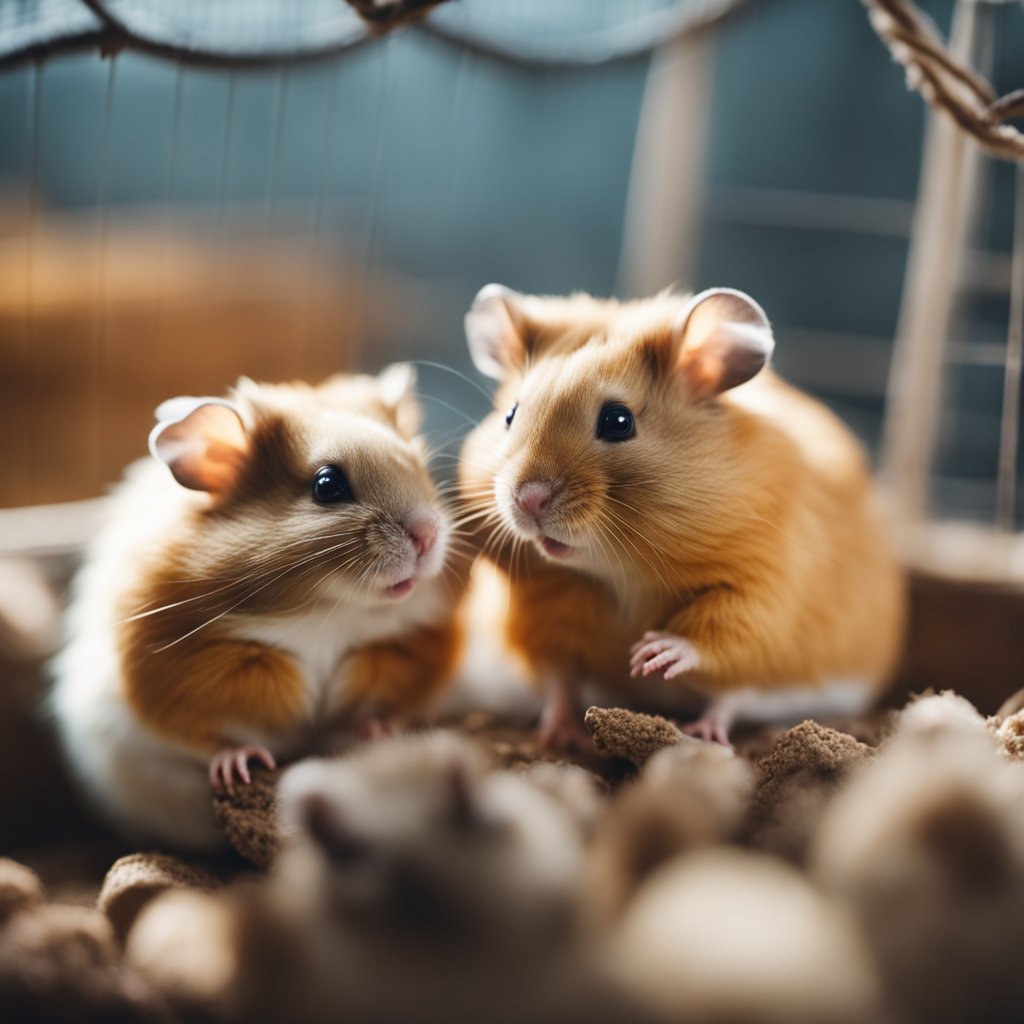Do Hamsters Make Noises When They Are Happy? Explained
Do hamsters make noises when they are happy? If you are a hamster owner, you may have noticed that your furry friend makes various sounds, from squeaks to chirps, but what do they mean? Hamsters are social animals that use vocalizations to communicate with each other and their owners. Understanding your hamster’s vocalizations can help you better care for your pet and strengthen your bond.
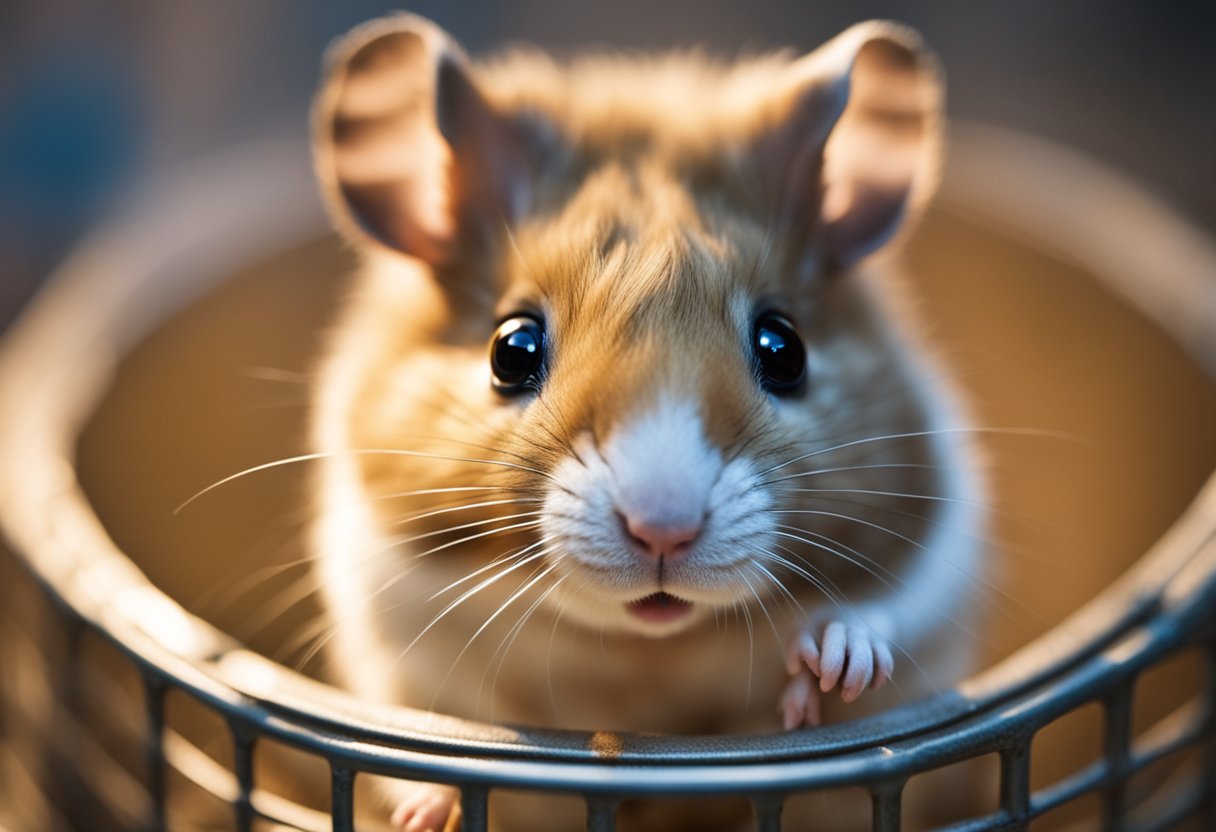
Hamsters are known to make a variety of noises, but are generally not loud animals in the way that dogs or birds can be. Their vocalizations can range from soft squeaks to more noticeable chirps or squeals. One of the most common sounds that happy hamsters make is a clicking noise or bruxing, which is when they rub their teeth together. This usually happens when the hamster is content and calm, similar to a cat purring. Another sound that hamsters emit when they are happy is squeaking. However, squeaking can signal many things, including fear, pain, or aggression, so it is important to pay attention to the context in which it occurs.
Understanding Hamster Vocalizations
Hamsters use vocalizations to communicate with each other and their owners. Some of the most common sounds that hamsters make include chattering, squeaking, hissing, and growling. These sounds can be used to indicate a variety of emotions, such as fear, aggression, or contentment. It is important to pay attention to your hamster’s body language and the context in which the sounds are made to better understand their meaning.
Key Takeaways
- Hamsters make various sounds to communicate with each other and their owners.
- Clicking and squeaking are common sounds that happy hamsters make.
- Understanding your hamster’s vocalizations can help you better care for your pet and strengthen your bond.
Understanding Hamster Vocalizations
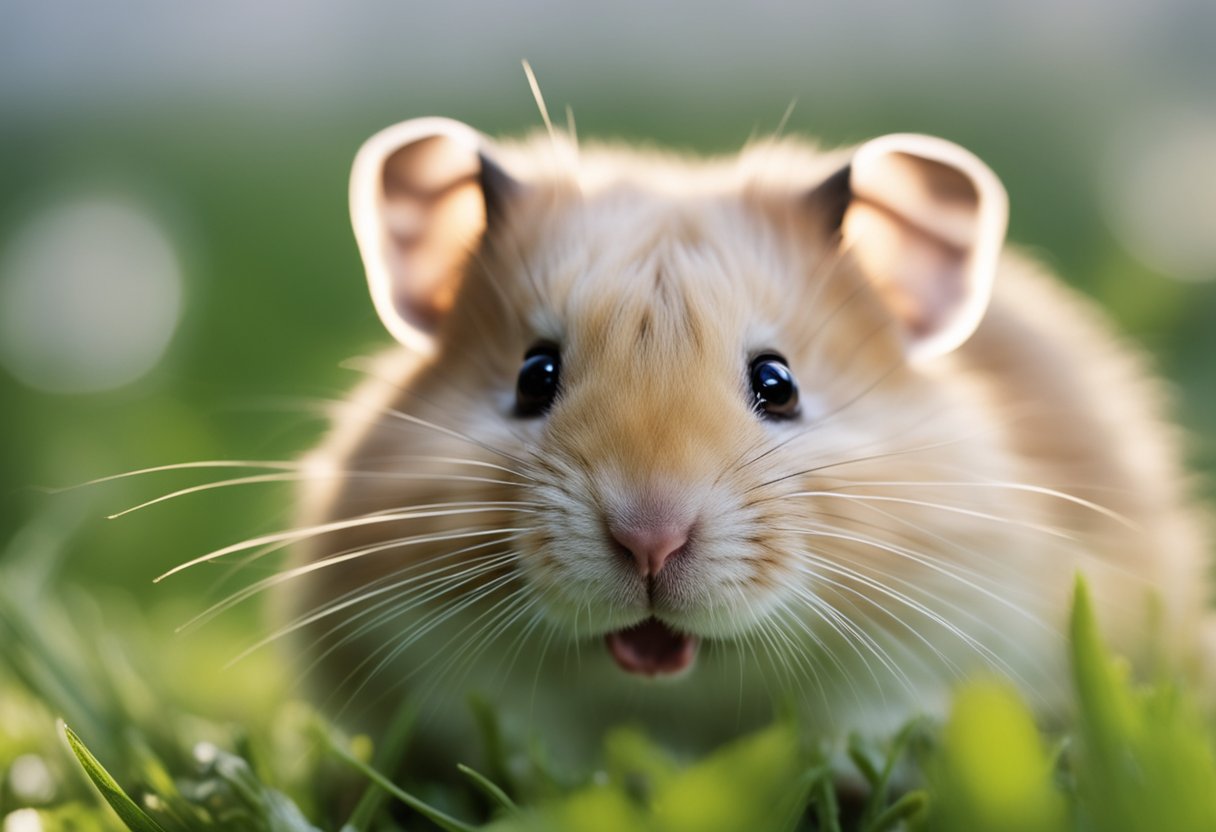
Hamsters are known for their adorable and unique vocalizations. Understanding the different types of noises they make and what they mean can help you better understand your furry friend’s mood and needs.
Types of Hamster Noises
Hamsters can make a variety of sounds, each with its own meaning. Some of the most common noises hamsters make include:
- Squeaking: This is the most common sound hamsters make. They usually squeak when they’re happy, excited, or scared. Young hamsters especially tend to squeak when they’re playing or exploring.
- Chirping: Hamsters make a chirping sound when they’re feeling content and relaxed. It’s a soft, gentle sound that’s often accompanied by a relaxed posture and closed eyes.
- Bruxing: Bruxing is the grinding or gnashing of teeth that hamsters do when they’re feeling relaxed and comfortable. It’s a sign that your hamster is feeling happy and content.
- Hissing: Hissing is a defensive sound that hamsters make when they’re feeling threatened or scared. They may also hiss when they’re in pain or feeling uncomfortable.
Interpreting Happy Sounds
When hamsters are feeling happy and content, they tend to make soft, gentle sounds like chirping and bruxing. They may also make a purring sound, which is a sign that they’re feeling relaxed and comfortable.
If your hamster is making these happy sounds, it’s a good sign that they’re feeling comfortable and content in their environment. However, it’s important to remember that hamsters are still prey animals and may hide signs of discomfort or pain. Always monitor your hamster’s behavior and seek veterinary care if you notice any changes in their behavior or vocalizations.
In conclusion, understanding your hamster’s vocalizations can help you better understand their mood and needs. By paying attention to the types of noises they make and their body language, you can create a happy and comfortable environment for your furry friend.
Behavioral Context of Hamster Sounds

Hamsters are social animals that communicate using a variety of sounds. As a hamster owner, it is important to understand the different sounds your pet makes and what they mean. In this section, we will discuss the behavioral context of hamster sounds.
Physical Indicators of Happiness
When a hamster is happy, it may make soft chirping or purring sounds. These sounds are usually accompanied by physical indicators such as relaxed body posture, closed eyes, and a lack of tension in the muscles. Additionally, a happy hamster may also make a soft, vibrating sound known as cooing. This sound is a sign of contentment and relaxation.
Situational Contexts for Vocalizations
Hamsters make different sounds depending on the situation they are in. For example, a hamster may make a squeaking sound when it is excited or happy. This sound is usually accompanied by playful behavior such as running around or climbing on objects. On the other hand, a hamster may make a crying sound when it is in pain, stressed, or afraid. This sound is usually accompanied by physical indicators such as hunched posture, wide-open eyes, and tense muscles.
Hamsters may also make hissing or growling sounds when they feel threatened or scared. These sounds are a sign of aggression and should be taken seriously. If your hamster is making these sounds, it is best to give it some space and avoid handling it until it calms down.
In conclusion, understanding the behavioral context of hamster sounds is essential for any hamster owner. By paying attention to your pet’s sounds and physical indicators, you can better understand their emotions and provide them with the care they need.
Resources
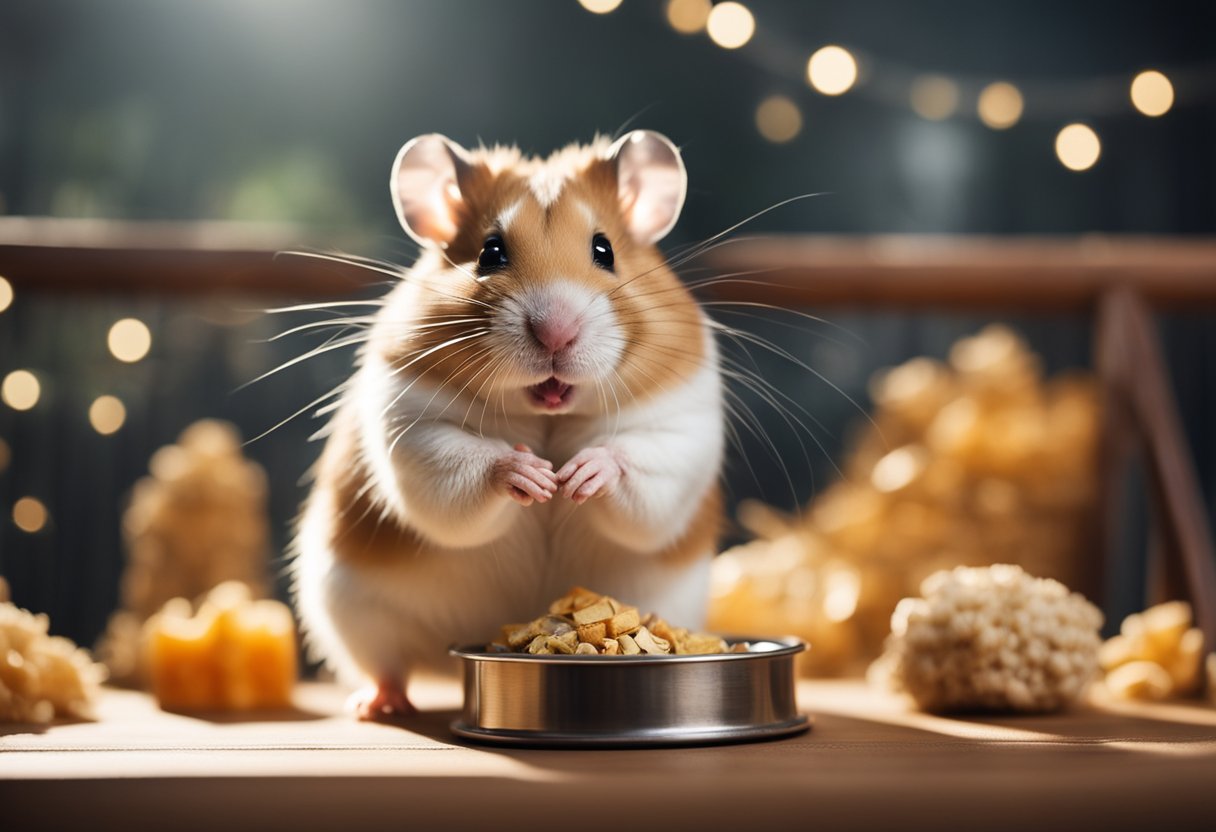
If you’re curious about whether hamsters make noises when they’re happy, there are a few resources you can check out to learn more. Here are some helpful sources:
- Hamster Answers provides a detailed breakdown of the different noises hamsters make and what they mean. According to the site, hamsters can make a variety of sounds when they’re happy, including soft cooing noises. They may also make purring or buzzing sounds, which can indicate contentment.
- Pet Keen’s article on hamster sounds includes audio clips of different hamster noises, including squeaking, which is a common sound made by happy hamsters. The site also notes that hamsters may make a “chirping” noise when they’re exploring or excited about something in their environment.
- Petsvills provides a list of eight different sounds that hamsters make and their meanings. The site notes that hamsters may make a “bruxing” noise when they’re happy, which is a grinding sound made with their teeth. They may also make a “chattering” noise when they’re agitated or annoyed.
- Helpful Hyena’s article on hamsters and loud sounds includes a section on hamster communication, which can include a variety of sounds made in different contexts. The site notes that hamsters may make a “squeaking” noise when they’re happy, as well as a “cooing” noise when they’re content.
By checking out these resources, you can learn more about the different noises hamsters make and what they might mean in different contexts. Whether you’re a new hamster owner or just curious about these adorable little creatures, understanding their communication can help you better care for them and appreciate their unique personalities.
Conclusion
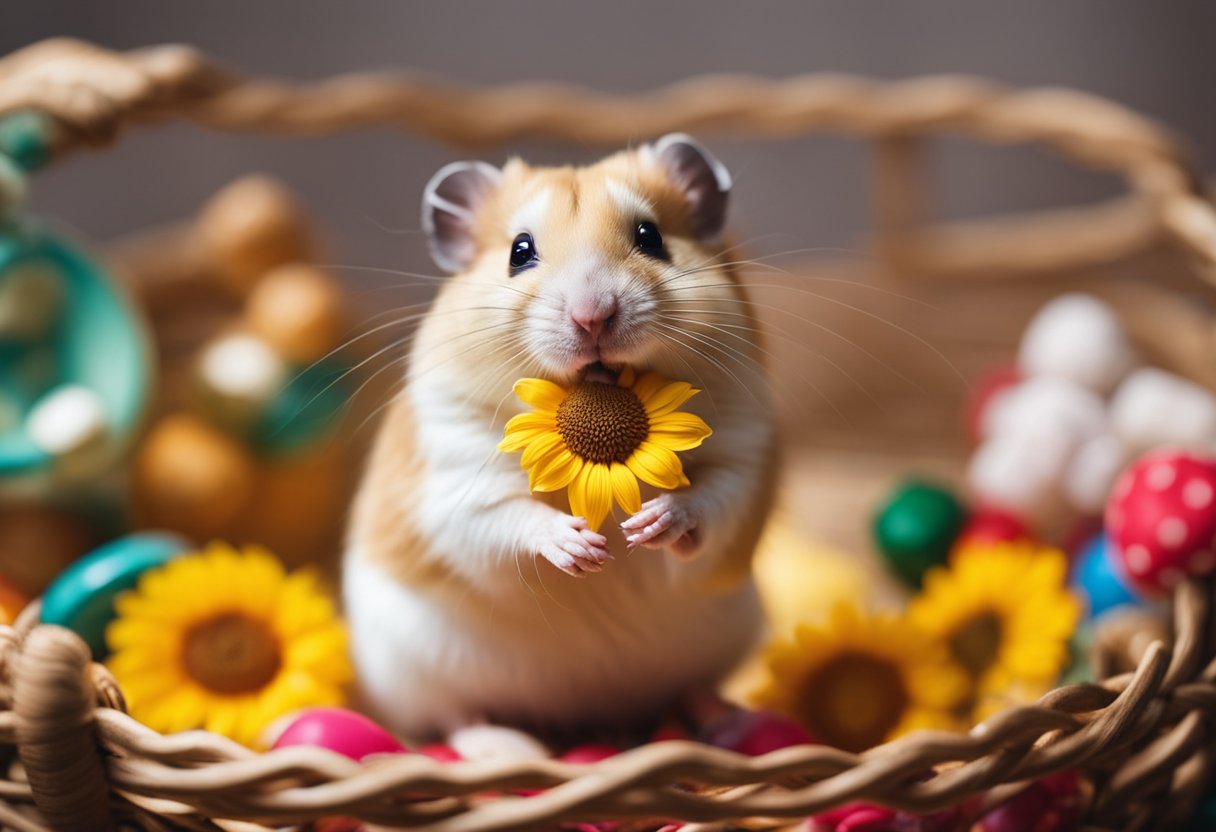
In conclusion, hamsters are known to make a variety of noises, and some of these noises can indicate happiness. For example, a soft purring sound is a sign of contentment. Additionally, chirping sounds can indicate that a hamster is happy, content, or greeting other hamsters.
However, it is important to note that not all noises made by hamsters indicate happiness. For instance, crying is usually an unhappy sound that indicates fear, stress, and pain. Squeaking and squealing sounds can indicate pain, distress, or fear. Therefore, it is important to pay attention to your hamster’s body language and vocalizations to understand their needs and emotions.
Overall, understanding hamster noises is essential for their health and wellbeing. By paying attention to the sounds your hamster makes and interpreting them correctly, you can ensure that your furry friend is happy and healthy.
Frequently Asked Questions
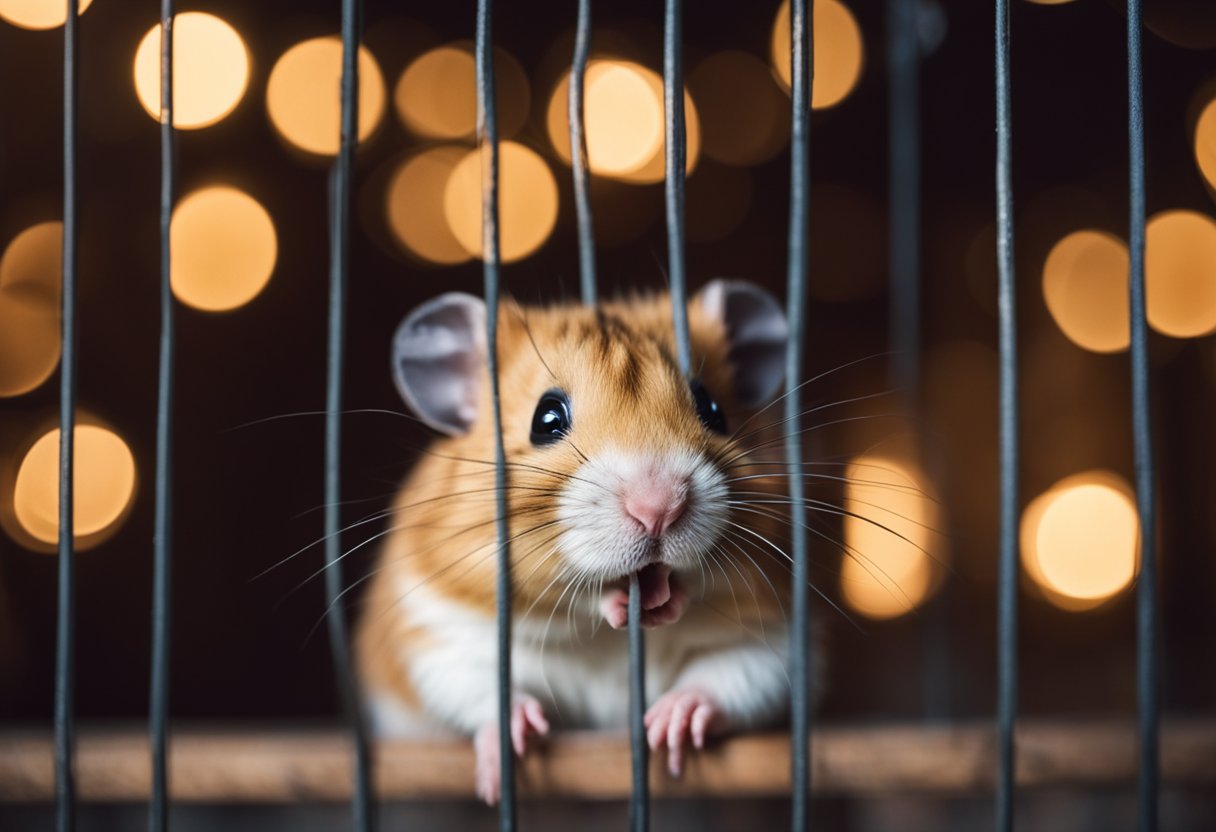
What are the signs of a content and satisfied hamster?
When a hamster is content and satisfied, it will exhibit calm and relaxed behavior. It will have a healthy appetite and will be active and playful. You may also notice that your hamster is grooming itself more often and has a shiny coat.
Can you interpret the different sounds a hamster makes?
Yes, hamsters make various sounds to express themselves. These sounds can convey different emotions. For instance, a soft squeak may indicate curiosity or contentment, while a sharp squeal could be a sign of distress or pain.
What does it mean when a hamster chirps or squeaks?
Hamsters chirp or squeak when they are happy or excited. These sounds can also indicate that your hamster is feeling playful or content.
How can I tell if my hamster is feeling joyful?
A joyful hamster will exhibit playful and active behavior. It will run around its cage, climb on its toys, and even perform acrobatic feats. Your hamster may also make happy sounds, such as chirps or squeaks.
Are there specific behaviors that indicate happiness in hamsters?
Yes, there are several behaviors that indicate happiness in hamsters. These include active and playful behavior, healthy appetite, and grooming itself more often. Your hamster may also be more social and willing to interact with you.
What noises should I expect from my hamster during positive moments?
During positive moments, you can expect your hamster to make happy sounds, such as chirps or squeaks. Your hamster may also brux, which is a grinding sound made by rubbing its teeth together. This is a sign of contentment and relaxation.
